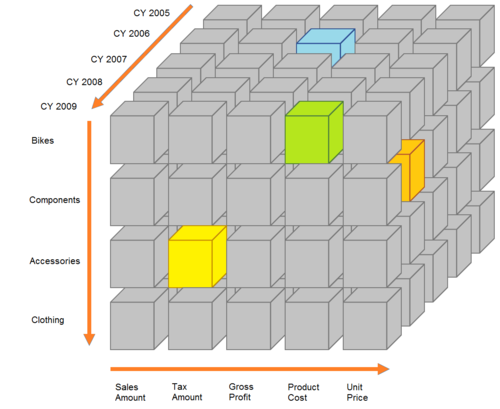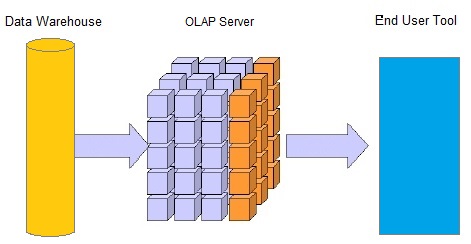Before you start using BI software based on OLAP it is important to understand the basic terms and concepts of OLAP. Let's start with OLAP itself.
OLAP (online analytical processing) is a technology that provides users with the fast and high-quality processing of large amounts of data. OLAP aggregate the data stored in the warehouse in the form of cubes, thus ensuring fast data processing and providing an opportunity to analyze the data from multiple perspectives.
OLAP is widely used for business intelligence: business reporting, forecasting, marketing analysis, financial reporting and similar applications.
How is the data stored in OLAP?
The term “multidimensional” implies that the data in OLAP is represented in the form of 3 and more dimensions, or data cubes, rather than two-dimensional tables.
OLAP data cube consists of measures and dimensions. Measure is a certain value (usually a numeric one) that serves as readily available business information, for instance, amount of sales, average duration of production process, etc. In other words, a measure is information about a certain business process. Dimension acts as the context of this information For example, if “amount of sold refrigerators” acts as a measure, “refrigerator manufacturer”, “sales rep”, or “country of the customer” would act as dimensions. The structure of the data in OLAP cube is hierarchical, or multilevel. Higher levels contain consolidated data, and the lower ones detail it. Such data representation is very convenient for users who can see detailed information for each aggregated item.
Due to this multidimensional and hierarchical structure, OLAP cubes are able to deliver answers to complex queries swiftly, and the data can be viewed and analyzed from different perspectives, which made OLAP popular with BI applications.
How can we extract the necessary data?
The information is stored in the data warehouse. OLAP server is a core component of OLAP technology that “sits” between a data warehouse and a client application. It provides functionality to aggregate, compute and analyze the historical data stored in the warehouse, thus making it more useful for business analysis and planning. OLAP server optimizes queries from the client application, redirects them to the database, and sends the data derived from the warehouse to the client app. As a result, an end user can obtain required information represented in an easily recognizable form in seconds. OLAP server also provides powerful calculation options, security, write-back capabilities, etc.
The list of most popular OLAP servers includes MS Analysis Services, icCube, Essbase, Mondrian. All these servers are supported by Ranet OLAP.



